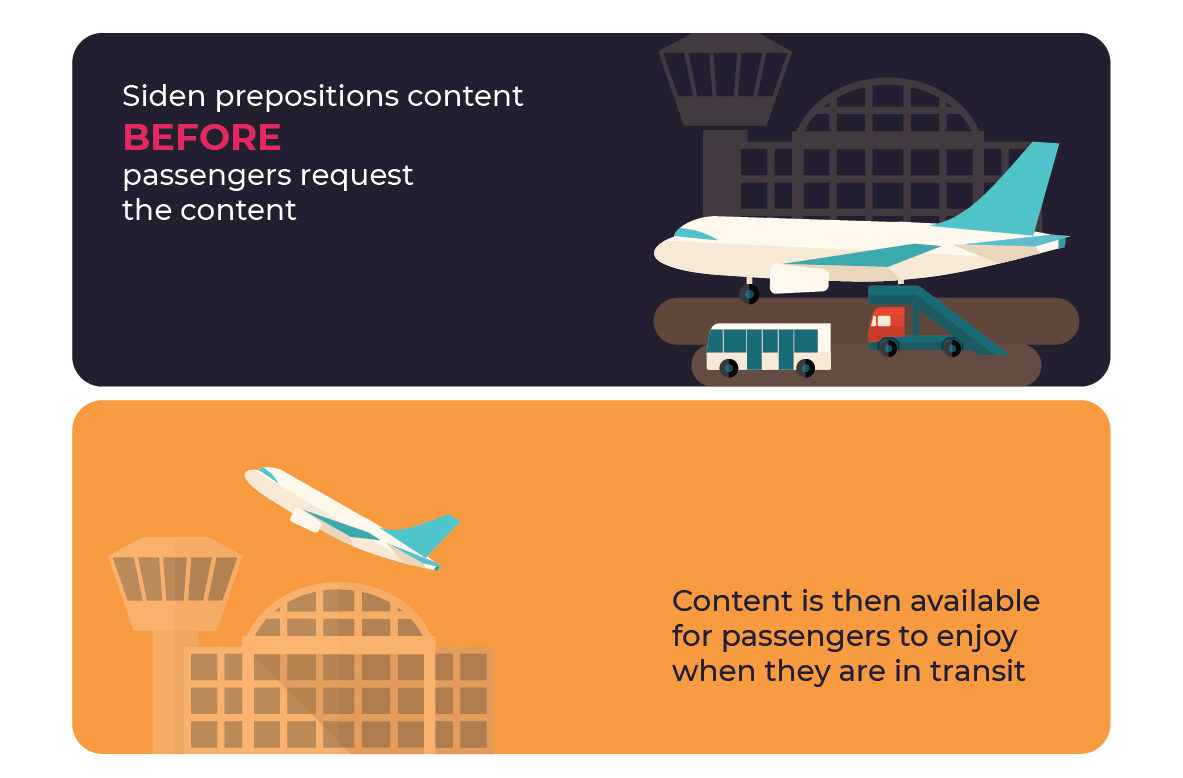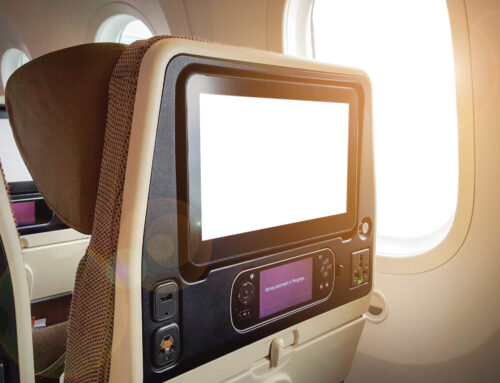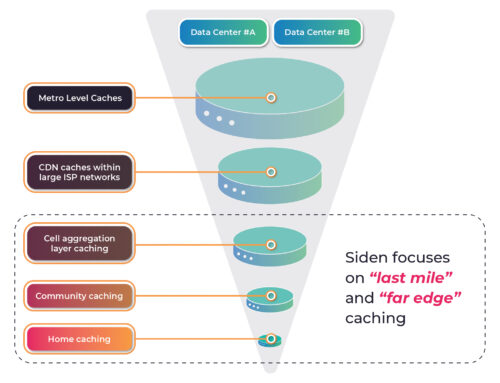Overview
Connectivity to planes is improving. But as airlines take advantage of higher bandwidth satellite links, passenger expectations of In-Flight Entertainment (“IFE”) systems are growing. Passengers in the air expect to be able to watch the same content as they have at home through airline IFE systems. Some will opt for the seat-back screen, while others will bring their own devices. The IFE must evolve to support many different streaming providers and devices, offering live TV streaming and video-on-demand and providing an excellent experience. This will result in multiplying the amount of content available on these IFE systems.
Without a new approach, however, all this additional content could overwhelm satellite backhaul network connections, resulting in a poor user experience. Thankfully, edge caching is here to help.
OTT Streaming
Over-the-Top (“OTT”) streaming is the industry term to describe delivering video over the Internet, and an OTT streamer is a specific service (think Netflix, Disney+, Max and the like). These services offer consumers content outside of traditional cable TV bundles, at lower costs. Only an Internet connection is required, and your choice of viewing device.
With the introduction of higher bandwidth satellite links onboard commercial aircraft, OTT streaming has come to commercial aviation. It’s now possible for airlines passengers to enjoy content from their existing OTT streamer subscriptions. However, unlike at home where you have a broadband pipe all to yourself, an aircraft’s Internet connection is shared amongst all passengers. And OTT streaming can easily overwhelm satellite backhaul network connections, resulting in a poor user experience.
For example, as few as 66 HD streams could consume all available satellite capacity on a plane; this represents significantly less than half the capacity of an average commercial plane. The following table shows examples of just how much bandwidth is required to support different numbers of streams. Alternatively, airlines could opt to degrade the quality of the streams to support more passengers, but the video experience would be akin to watching video in analog.
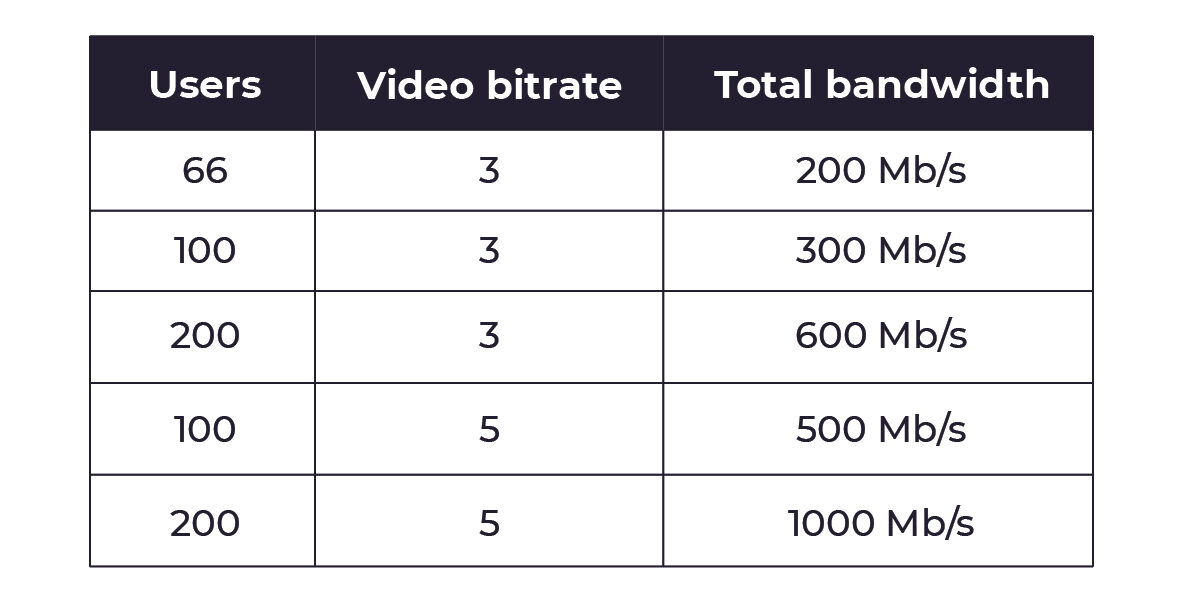
Demand-Based CDNs
To improve user experience, all major OTT streamers distribute their content via CDNs. Can these CDNs help reach passengers in their seats? The short answer is no.
CDNs perform what’s known as demand-based caching at the network edge. Content is not stored in the CDN until it’s requested. On the first request, an edge cache pulls the content from an upstream cache or origin server and caches it locally. Subsequent requests for the content can then be served from that local cache.
Demand-based caching by a traditional CDN is a problem with a low bandwidth access network, as the CDN’s edge cache is on the other side of the constrained link. There isn’t enough bandwidth for cache fill to happen on demand. Simply put, the constrained satellite network also constrains access to the OTT streamer’s CDN edge cache.
Streaming Through Existing CDN
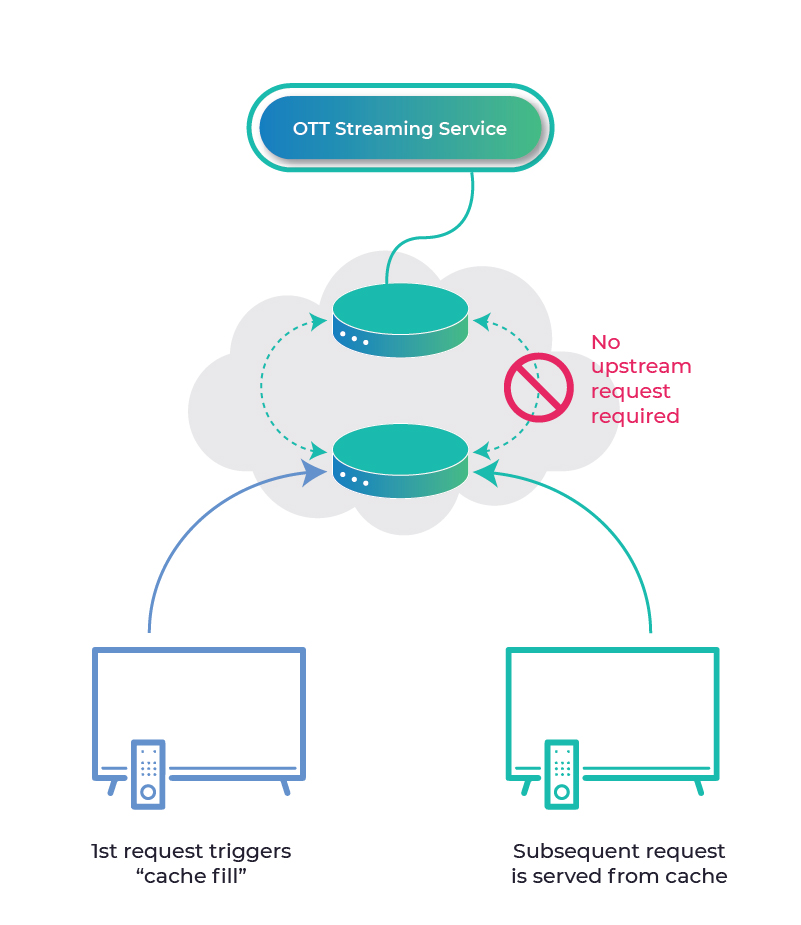
Prepositioning CDNs
A prepositioning CDN puts the edge cache on board the aircraft and populates that cache with video content in advance of requests. The video content is loaded into the cache when there is high bandwidth available. Once prepositioned, it does not require high bandwidth when users make requests.
Prepositioning of content can occur when the aircraft is on the ground (e.g. parked at a gate between flights), utilizing Wi-Fi or LTE connectivity. Or it could occur over satellite when there is excess capacity.
Prepositioning CDN with On-board Edge Cache
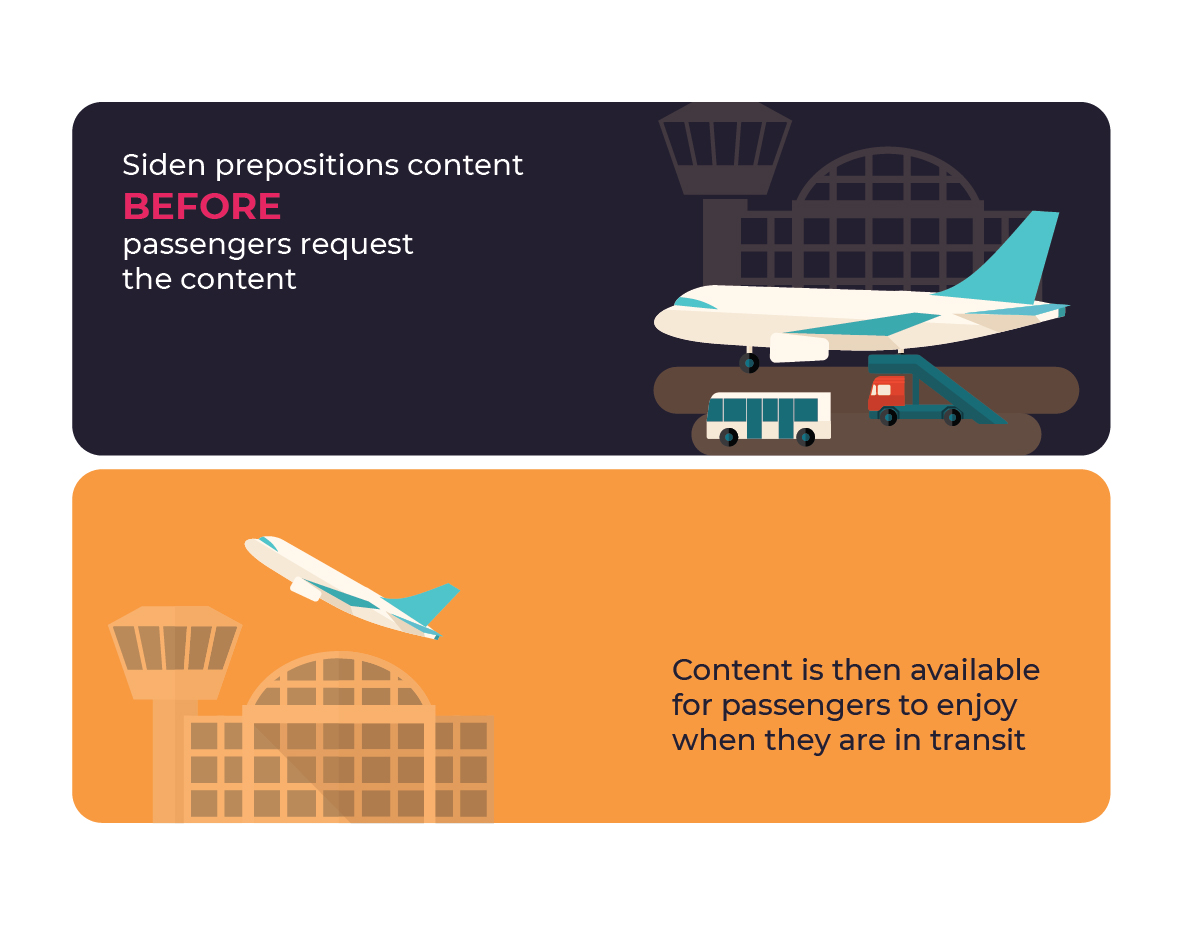
Advantages
There are numerous advantages of a prepositioning CDN with edge caches located on the aircraft, including:
- Superior User Experience – Passengers enjoy higher quality video. Titles served from cache start quickly and play buffer-free.
- Simple Scaling – Taking advantage of typical OTT streamer consumption patterns, caching the most popular titles enables up to 90% to be served from on-board caches. Hundreds of concurrent streams are supported, on existing IFE hardware.
- More Frequent Updates – Unlike the content currently licensed by airlines, the on-board cache can be refreshed frequently to bring in new titles from the OTT steamer catalog.
- Extra Bandwidth for Other Uses – With the majority of content served from the on-board edge cache, downlink bandwidth is freed up for other uses: email, chat, games, etc.
About Siden
Founded in 2018, Siden is at the forefront of revolutionizing connectivity in the aviation, maritime, and home broadband industries. Siden optimizes connectivity platforms through intelligent caching to provide end-users with more content from a wider array of partners, all in higher quality and without escalating network costs. Siden’s innovative approach not only boosts user satisfaction but also optimizes network efficiency, reducing operational costs for service providers.
For more information on how we can help you deliver an excellent experience for your customers, contact us.

